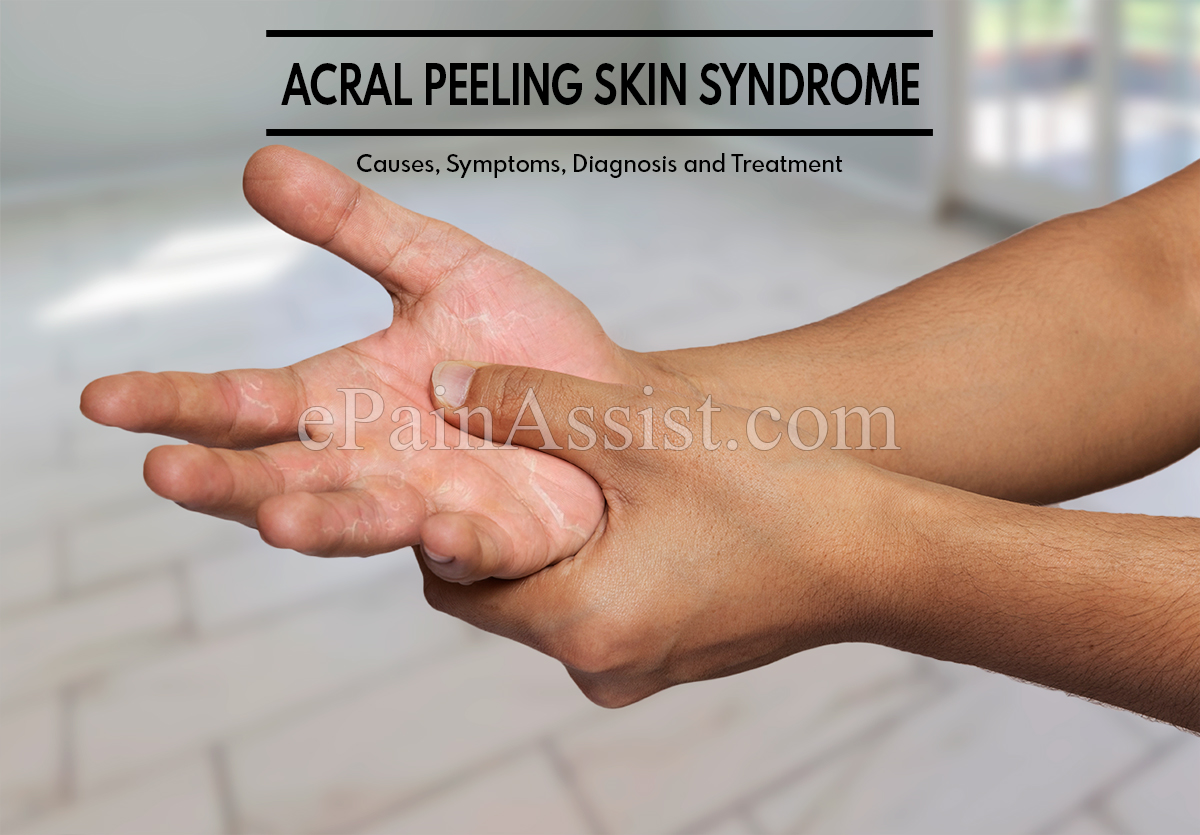What is Acral peeling Skin Syndrome?
Acral skin peeling syndrome is a rare genetic condition that leads to painless peeling of the top layers of the skin on the hands and feet. And can also affect the skin of the arms and legs. Acral skin peeling syndrome was first reported by Dr. Howard Fox in a case letter and since then 100 cases have been reported in the medical literature(1,2). The symptoms of Acral skin peeling syndrome are mild and do not affect the quality of life.

What Causes Acral Peeling Skin Syndrome?
Acral peeling skin syndrome is linked with mutations in gene transglutaminase 5 (TGM5) and less commonly with mutations in gene cystatin A (CSTA).
TGM5 signals the body to create the TGM5 enzyme that is found in the tissues including the epidermis. This enzyme creates cornified cells that play the role of a protective barrier between the skin and the outside world. If the TGM5 enzyme is not created the outermost layer of the skin stays unprotected and peels off. It mostly affects the hands and feet as these are the parts of the body exposed to most friction.
CSTA gene signals the release of CSTA enzyme that plays a role in cell to cell adhesion(3).
The gene mutations linked with acral peeling skin syndrome are inherited in autosomal recessive traits, which means a copy of the mutated gene needs to be received from both parents. If it is received from one parent then the person is a carrier and does not develop symptoms. If both the parents have gene mutations there are 25 percent chances of the child developing the symptoms, 50% chances of the child carrying the gene, and 25% chances of neither developing the gene nor carrying the symptoms(4).
Symptoms of Acral Peeling Skin Syndrome
In acral peeling skin syndrome, there is peeling of the skin of the top layers called the epidermis. The peeling is seen affecting the hands and feet but can also affect the arms or legs.
Other symptoms of Acral skin peeling syndrome include plucked hair and fragile skin. There is itching and redness of the skin under the peeling skin.
The peeling is seen occurring from birth but can appear later in childhood as well. A case study done in 2016 found a child developing blisters and peeling in palms and soles from the age of 6 months(5).
The peeling in Acral skin peeling syndrome is known to worsen from heat, humidity, and moisture.
The condition does not affect the quality of life and is also not associated with any other health condition.
Diagnosis and Treatment of Acral Peeling skin syndrome
Acral peeling skin syndrome is mostly diagnosed in early childhood. But, in some cases, it remains undetected until adulthood as found in a case study in 2014(6).
If the condition is suspected, a family medical history is taken and a physical examination is done. To confirm the diagnosis, a sample of the skin is taken for testing TGM5 and CSTA gene mutations.
The treatment of acral peeling skin syndrome mostly involves managing the symptoms. Curing the condition completely is not possible. Medical treatment is not necessary usually. If a blister is developed, it is lanced by the doctor with a sterile needle to drain the fluid and a light dressing is applied to avoid the infection.
Home Remedies
The symptoms of Acral skin peeling syndrome can be managed at home with the help of a moisturizer called emollient. These help in soothing the skin and preventing drying and flaking as they cover the skin under a thick oily layer that helps seal in the moisture. These can be used in the form of creams, lotions, sprays, or ointments.
The Acral skin peeling syndrome symptoms can also be managed by avoiding the following:
- Immersion in water
- High humidity
- Hot temperature
- Friction on hands and feet
If you suspect that your child has acral peeling skin syndrome, a doctor should be consulted. A proper diagnosis can be extremely in managing the symptoms of the condition.
Also Read:
- Hemangioma Of Skin: Causes, Risk Factors, Signs, Symptoms, Investigations, Treatment
- Dermatographic Urticaria or Skin Writing: Causes, Symptoms, Treatment
- Work Related Skin Disease or Occupational Skin Disease
- What is Skin Allergy & How is it Treated?
- Skin Peeling in Newborn’s & What to do About It?
- What is Peeling Skin Syndrome: Causes, Symptoms, Treatment, Diagnosis
- Why Is My Skin Peeling Between The Toes?
